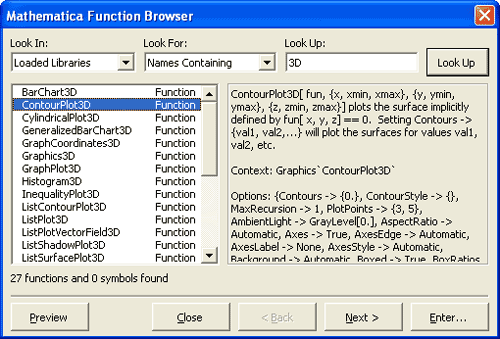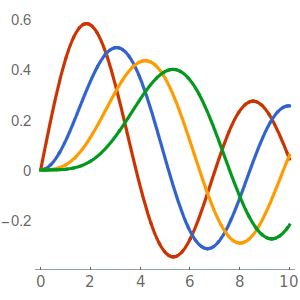

If you have a question you’d like to see answered in this blog, you can submit it to the Q&A Team using this form.
FUNCTION MATHEMATICA HOW TO
You can specify where tick marks are drawn, what labels they should have, how long they are, and even colors and styles.ĭownload the Computable Document Format (CDF) file for this post to see how to get the custom tick marks used in this plot: (Here, Range specifies the tick marks on the x axis, and Automatic uses the default tick marks on the y axis.) The Mathematical Functions Site This site was created with Mathematica and developed by Wolfram Research with partial support from the National Science Foundation. When plotting trigonometric functions in degrees, you might also want to manually specify exactly where Mathematica draws tick marks. That answers the main question, but here’s a related hint. A rule for creating a 'y' output from an 'x' input. Using either Degree or °, you can plot trigonometric functions in degrees: Looking for Function (mathematics) Find out information about Function (mathematics). You can also find this symbol in the Basic Math Assistant palette in the Palettes menu of Mathematica. The symbol ° is a handy shorthand for Degree and is entered as Esc-d-e-g-Esc. This special constant is called Degree in Mathematica. To convert from degrees to radians, multiply by π ⁄ 180. Trigonometric functions in Mathematica such as Sin and Cos take x to be given in radians: If the domain of is a topological space, the support of is instead defined as the smallest closed set containing all points not mapped to zero. How do you plot trigonometric functions in degrees instead of radians? In mathematics, the support of a real-valued function is the subset of the domain containing the elements which are not mapped to zero. This week’s question comes from Brian, who is a part-time math teacher: You can submit your question directly to the Q&A Team using this form. I hope this example is useful in terms of this discussion.Got a question about Mathematica? The Wolfram Blog has answers! We’ll regularly answer selected questions from users around the web.

Using Prior Expressions Using ''to refer to the previous expression The percent sign,, is shorthand for the results of the previous calculation, e.g., In.

Not as "cut and dried" as I had expected! the Plot3D,click on Help and then Find Selected Function and the complete documentation on the relevant function will pop up.Mathematica’s on-line help system is the best I’ve seen. One can define a function in several different ways in Mathematica as we. a mathematical function seems to be context dependent. Defining functions is one of the strong features of Mathematica. I've Googled various sources on the web and the distinction between a mathematical operator vs. The debate expanded to include a debate on exponentiation (operation vs. Nearly $400$ ensuing comments were posted in a debate about what constitutes an operator versus a function. This was immediately challenged by someone who stated that the factorial symbol $\,(!)\,$ represents a function rather than an operation and therefore the proposed answer violates the original requirement that specifies the use of operations. $$1 \left\langle \,\Rule\,\right\rangle\,$ represents the space for an operator Perhaps this can serve as an example for this discussion, if I'm interpreting the original question correctly, that is: Yes, this is how we start off learning about functions, but we quickly move on to functions of more than one input (those whose graphs describe surfaces, for example). are applied.Ī footnote: at least one of the answers above implied that a function, unlike an operator, has only one input. "How are the words 'operator' and 'function' (and, if you like, 'mapping', 'transformation') used when we are talking about mathematics?" Īnother way of approaching it - really, the same idea as the above but starting from the other end, so to speak - is to ask about the underlying mathematical reality (in this case, values which are being transformed to yield new values), to which the words "operator", "function" etc. To answer this question, may I suggest that everyone think like this: instead of asking " IS an operator a function?" or "What IS an operator?" etc.


 0 kommentar(er)
0 kommentar(er)
